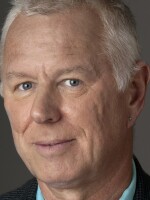It's not often someone stumbles over a "lost kingdom." But that's what a volcano scientist has done on a remote island in Indonesia. The kingdom, called Tambora, disappeared in a matter of minutes in 1815, under billions of tons of rock and ash during a violent volcanic eruption.
University of Rhode Island volcanologist Haraldur Sigurdsson has spent 20 years roaming the islands of Indonesia, a place known for apocalyptic eruptions. He was especially drawn to a huge volcano on the island of Sumbawa.
"I knew that it was the largest and most important volcanic eruption on the Earth because it caused the year without a summer, a big global climate change, and it also led to the death of about 117,000 people just on this island and on neighboring islands," Sigurdsson said.
Mount Tambora launched 100 cubic kilometers of rock into the air -- 10 times more than Italy's Vesuvius, which buried Pompeii in 79 A.D., and 150 times more than Mount St. Helen's. So much ash and dust filled the air that crops failed and people starved on the other side of the planet.
On one of his expeditions to the island, Sigurdsson's mountain guide told him about a gully where people had found bones and ceramics. They had named it "museum gully."
Sigurdsson visited the site on the last day of his expedition. He didn't have much time there -- night was falling and he had to catch a boat home. "But I saw enough to know this was a very interesting place."
He came back years later with ground-penetrating radar. Under the loose pumice and ash, he located more artifacts. Then he found several burned wooden beams sticking up out of the ground. With Indonesian scientists, he uncovered a collapsed building. Inside were the remains of a woman.
"She was knocked over on her back by the force of the pyroclastic flow, and she appeared to be holding a machete or long knife in one hand. Over her arm was a cloth, and we think it was a sarong, totally carbonized, and her body was extensively carbonized, too," said Sigurdsson.
There was the body of a man, too, and glass bottles that had melted. All had been buried in a white-hot cloud that barreled down the mountain faster than a locomotive.
"Pyroclastic flow is rather like a snow avalanche," said Sigurdsson. "It's composed of particles of ash and pumice and gas -- but at a thousand degrees -- that moves at a high velocity, perhaps up to 100 miles per hour," said Sigurdsson.
Few written records of the lost civilization exist. Colonial British officials visited Tambora shortly before it was buried. About 10,000 people lived there. The officials recorded 48 words of their language. It wasn't Malay, like other Indonesian dialects, but more like the Khmer language of Cambodia.
Sigurdsson will return to the site next year. In the meantime, Indonesian archeologists plan to excavate more of what some hope could be the "Eastern Pompeii."
Copyright 2022 NPR. To see more, visit https://www.npr.org.


